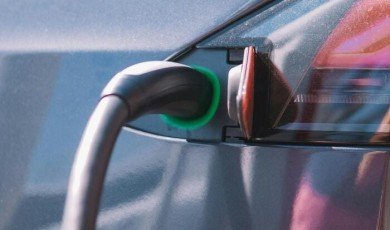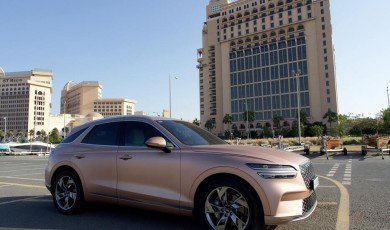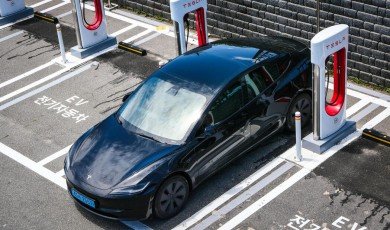
The world of electric vehicles (EVs) is racing ahead, with new technological advancements not just in the cars themselves, but in the very ecosystems that support them. As manufacturers, engineers, and designers work tirelessly to meet the ever-increasing demand for cleaner and smarter mobility, a silent partner is playing a pivotal role in this transformation: health care translation You might wonder how a field rooted in health care and language can have such a sweeping impact on the future of electric cars. The truth is, medical translation is helping drive EV innovation in ways that are often unseen, but profoundly important.
On this automotive blog, we dive deep into how these translation services are shaping hybrid cars, sports EVs, luxury electric vehicles, and the promising new models hitting the road in 2025. Read on to discover how health care translation and linguistic expertise have become crucial gears in the EV engine of progress.
Medical Translation and Electric Vehicle Technology
At first glance, the medical sector and the world of cars may seem worlds apart. However, there's an increasingly significant overlap, especially as EV manufacturers focus on integrating advanced medical technologies into their vehicles. Here are just a few ways in which this intersection is revolutionizing the automotive landscape:
- Enhanced In-Car Health Monitoring: Modern EVs, particularly luxury and high-performance models, are being equipped with sophisticated biometric sensors. These monitors track heart rates, blood oxygen levels, and even stress parameters, alerting drivers to possible health concerns and ensuring safety and well-being behind the wheel.
- Telemedicine Integration: New EVs are experimenting with onboard telemedicine capabilities, enabling instant virtual doctor consultations if the car detects a medical emergency, such as a potential heart attack or fainting spell. These systems require seamless data exchange across languages and regions, especially for global vehicle releases.
- AI Diagnostics and Safety Systems: Artificial intelligence in cars relies on massive health data troves to spot anomalies in both the driver’s behavior and the vehicle’s operation. Translating health protocols and diagnostic criteria into multiple languages ensures compliance, safety, and user accessibility worldwide.
These critical innovations depend heavily on precise translation of medical documents, interface controls, user manuals, emergency protocols, and legal waivers. This is where health care translation step in, ensuring clarity, compliance, and safety for EV users in every market.
The Role of Health Care Translation in EV Safety and Accessibility
1. User Manuals and In-Vehicle Systems
New electric vehicles often operate across continents, serving diverse populations with unique linguistic and cultural backgrounds. When EVs feature advanced health monitoring or emergency services, it's crucial that all written and digital instructions are accurately translated. Health care translation ensures drivers in Tokyo, Paris, or São Paulo can understand exactly how to use a defibrillator system or access emergency telemedicine through their car.
2. Compliance with International Health Standards
Automotive manufacturers must comply with a mind-boggling array of local, national, and international medical regulations. Whether deploying a new biotelemetry feature in a sports EV or integrating allergen sensors in a family-friendly hybrid, the documentation and protocols must be translated according to regulatory requirements. Failure to do so risks not only legal repercussions but also the safety of drivers and passengers.
3. Training Materials for Global Dealerships
Selling a new electric vehicle equipped with medical-grade technology requires dealership staff to be highly knowledgeable. This means providing manuals, video guides, and emergency protocol sheets in multiple languages. Translation specialists familiar with both EV and medical terminology enable effective training worldwide, ensuring that drivers are never left in the dark regardless of where they're buying their next car.
How Translation Helps Research and Development
Electric vehicle innovation does not stop at production lines; it begins in the collaborative research labs of scientists and medical experts worldwide. Here’s where translation services prove indispensable:
- Sharing Breakthroughs Globally: The latest health-monitoring tech used in EVs is often a result of international partnerships. Engineering teams in Germany may work with medical AI developers in Israel or Japan. Health care translation ensures that technical research, patents, and trial results are shared accurately, accelerating the global pace of innovation.
- Clinical Trials and Pilots: Before deploying medical-grade features in mass-produced EVs, automakers may run studies across continents. Clear translation of consent forms and health questionnaires is essential for both regulatory compliance and ethical standards.
- Localization of Onboard Health Apps: Automotive companies are creating proprietary health-related apps integrated within the vehicle interface. These require not just translation, but nuanced localization—adapting medical recommendations and terminology to suit local cultural norms and medical practices. This job is best left to professional health care translation specialists.
The end result? Faster development cycles, safer vehicles, and smarter cars that truly serve their users' needs, regardless of what language they speak.
Bridging Gaps in the Electric Car Marketplace
Driving EV Adoption Across Borders
One of the greatest barriers to EV adoption is apprehension about new technology, especially those tied to driver safety or health. By offering comprehensive, clearly translated health features, carmakers build trust with consumers. For instance, a senior citizen in Spain might feel more comfortable purchasing a luxury EV if explained—in his native language—how its advanced monitoring system could contact emergency services automatically.
Cross-Industry Collaboration
The integration of medical tech into electric vehicles often brings together automakers, health care firms, universities, government agencies, and tech start-ups. Effective collaboration requires partners to speak the same technical language—literally. Relying on health care translation experts ensures all participants are aligned, reducing the risk of costly mistakes or dangerous misunderstandings in multi-lingual, cross-industry projects.
Saving Lives on the Road
Perhaps the most important impact of medical translation on EV innovation lies in safety. In the event of an on-road medical emergency, quick and correct use of onboard health care technology can be the difference between life and death. Accurate, user-friendly translations of health-related features and alarms mean that panic is replaced with clarity, giving drivers and passengers a fighting chance, wherever they are.
The Road Ahead
As we look toward the best electric cars of 2025 and beyond, it’s clear that the blending of automotive and medical technology is here to stay. From luxury hybrids to high-performance sports EVs and cutting-edge family vehicles, drivers and passengers are relying more than ever on health integration features built directly into their cars. None of this groundbreaking progress would be possible without the expert guidance of medical translation services.
Health care translation is not just a supporting service; it is a driving force behind safer, smarter, and more accessible electric vehicles. By facilitating international innovation, ensuring safety compliance, and making health tech understandable for every driver, these services will continue to fuel the electrification of both our roads and our lives.





